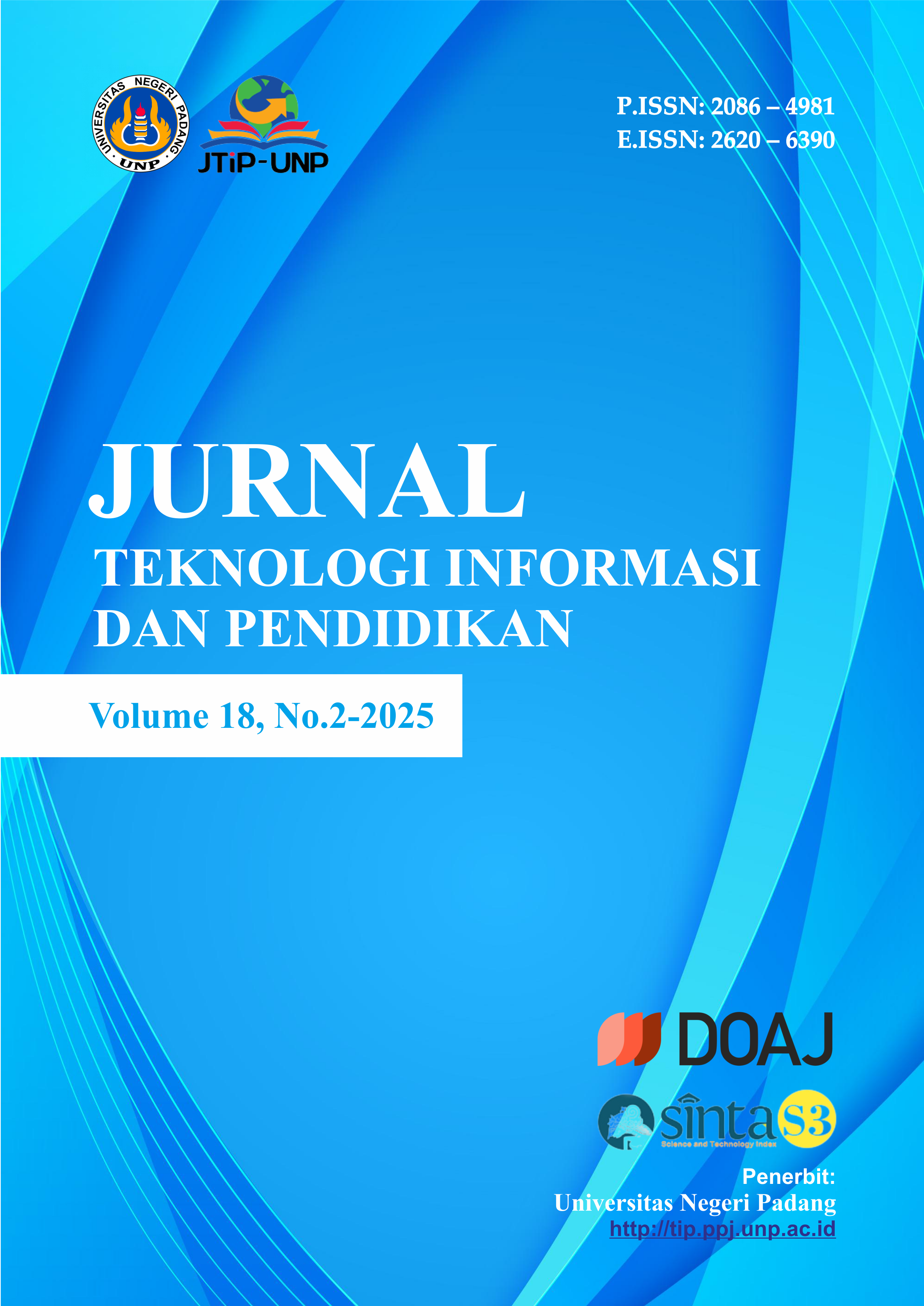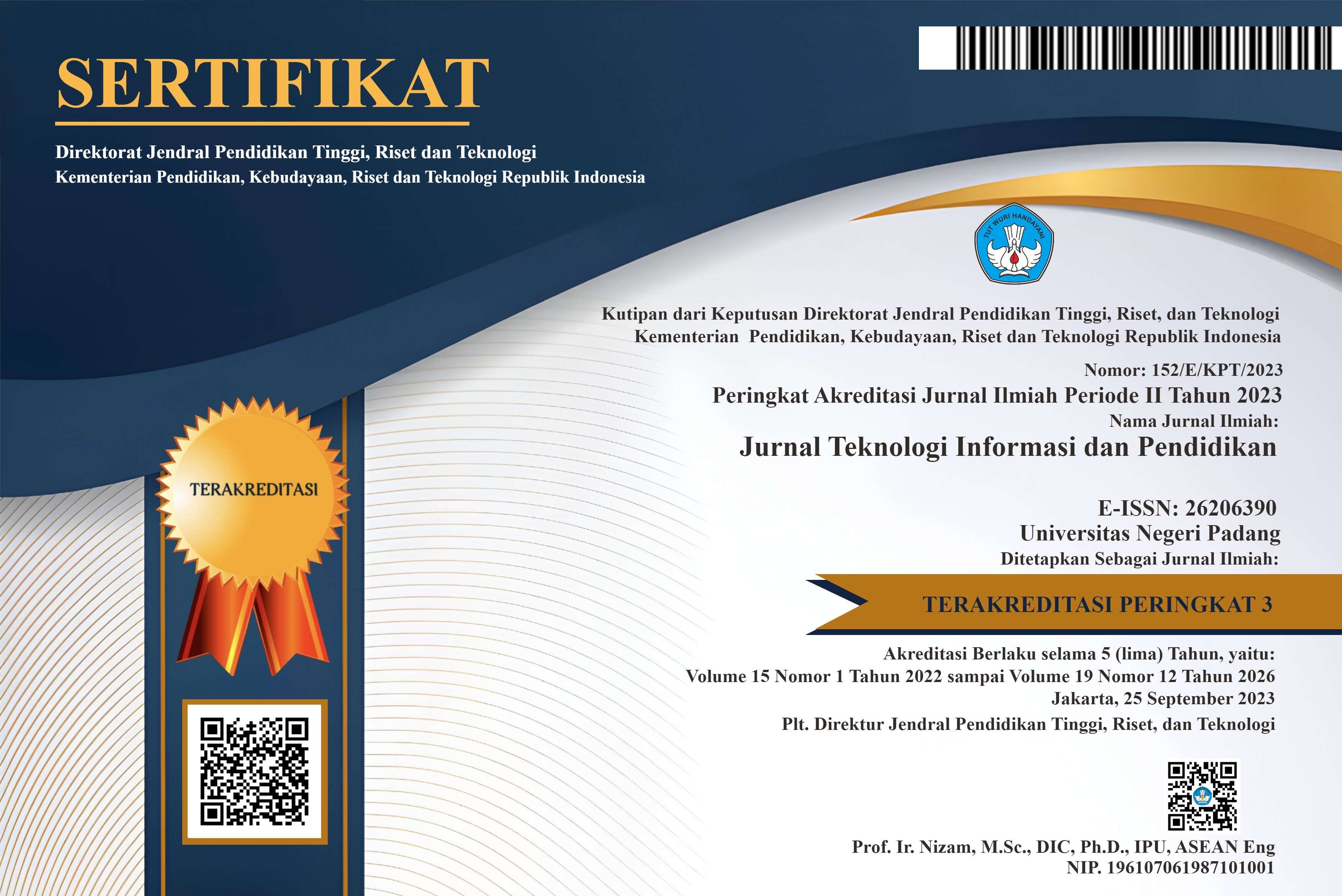Sentiment Analysis About Acquisition and Policy of X (Twitter) by Elon Musk
DOI:
https://doi.org/10.24036/jtip.v18i2.901Keywords:
sentiment analysis, user perception, labeling, algorithm, parameterAbstract
Social media Twitter (now X) is quite popular because it offers the ability to communicate between users and accelerate the flow of information obtained. In its development, the acquisition of the company by Elon Musk led to various changes. Some of the new policies had a direct impact on users and caused mixed reactions. This research applies a comparison between the two types of labeling techniques using TextBlob and VADER, a comparison of algorithms using Random Forest and Balanced Random Forest, as well as the use of algorithm parameters by default and Grid Search, to find information on user perceptions of the impact of the acquisition and new policy X by conducting sentiment analysis. The data used is the result of crawling X's post in the period from the emergence of the acquisition issue until the rebranding of the Twitter name and logo to X, namely April 25, 2022 to July 23, 2023. The results show that visually, these three factors have an accuracy level that shows the use of superior factors, namely TextBlob, Balanced Random Forest, and default parameters, whose combination obtained the highest accuracy value of 87%. The results of sentiment classification using two labeling techniques show that positive sentiment is greater than negative sentiment. However, in negative sentiment there are several problems based on the highest frequency of words that appear. So in this study, several recommendations are given that can be done to meet the expectations of user satisfaction with the X platform.
References
C. M. Annur, “Facebook Hingga Twitter, Ini Deretan Media Sosial Terpopuler Dunia di Awal 2023,” Databoks - Katadata. Accessed: Apr. 08, 2023. [Online]. Available: https://databoks.katadata.co.id/datapublish/2023/02/06/facebook-hingga-twitter-ini-deretan-media-sosial-terpopuler-dunia-di-awal-2023
F. Solihin, S. Awaliyah, and A. M. A. Shofa, “Pemanfaatan Twitter Sebagai Media Penyebaran Informasi oleh Dinas Komunikasi dan Informatika,” Journal Pendidikan Ilmu Pengetahuan Sosial (JPIPS), vol. 13, no. 1, pp. 52–58, 2021.
Y. Tang, “Critical Analysis of Elon Musk’s Takeover of Twitter,” BCP Business & Management, vol. 39, pp. 247–252, 2023, doi: 10.54691/bcpbm.v39i.4071.
L. Zain, “6 Kebijakan Twitter Terbaru dari Elon Musk, Wajib Tahu!,” IDN Times. Accessed: Apr. 08, 2023. [Online]. Available: https://www.idntimes.com/tech/trend/laili-zain-damaika-1/kebijakan-twitter-terbaru-dari-elon-musk-1?page=all
M. Clark, E. Roth, and J. Peters, “Elon Musk has Found His Replacement as CEO of Twitter,” The Verge. Accessed: Sep. 08, 2023. [Online]. Available: https://www.theverge.com/2023/5/11/23517090/elon-musk-twitter-ceo-replacement
B. Hakim and P. R. Kinasih, “Sentiment Analysis of Indonesian Citizen Tweets Using Support Vector Machine on the Rebranding of Twitter to X,” JTK, vol. 18, no. 2, p. 468, Jul. 2024, doi: 10.33365/jtk.v18i2.4293.
TextBlob, “TextBlob: Simplified Text Processing,” TextBlob. Accessed: Jun. 19, 2023. [Online]. Available: https://textblob.readthedocs.io/en/dev/
VaderSentiment, “Welcome to VaderSentiment’s Documentation!,” VaderSentiment. Accessed: Jun. 19, 2023. [Online]. Available: https://vadersentiment.readthedocs.io/en/latest/
O. Rado and D. Neagu, “On Selection of Optimal Classifiers,” in Artificial Intelligence XXXVI, vol. 11927, M. Bramer and M. Petridis, Eds., in Lecture Notes in Computer Science, vol. 11927. , Cham: Springer International Publishing, 2019, pp. 494–499. doi: 10.1007/978-3-030-34885-4_42.
E. Fitri, “Analisis Sentimen Terhadap Aplikasi Ruangguru Menggunakan Algoritma Naive Bayes, Random Forest dan Support Vector Machine,” JT, vol. 18, no. 1, p. 71, 2020, doi: 10.26623/transformatika.v18i1.2317.
M. L. Suliztia, “Penerapan Analisis Random Forest pada Prototype Sistem Prediksi Harga Kamera Bekas Menggunakan Flask,” Online, Universitas Islam Indonesia, Yogyakarta, 2020. Accessed: Apr. 11, 2023. [Online]. Available: https://dspace.uii.ac.id/handle/123456789/23969
M. D. Purbolaksono, M. I. Tantowi, A. I. Hidayat, and Adiwijaya, “Perbandingan Support Vector Machine dan Modified Balanced Random Forest dalam Deteksi Pasien Penyakit Diabetes,” Jurnal RESTI (Rekayasa Sistem dan Teknologi Informasi), vol. 5, no. 2, pp. 393–399, 2021, doi: 10.29207/resti.v5i2.3008.
M. E. Kabir, “Topic and Sentiment Analysis of Responses to Muslim Clerics’ Misinformation Correction about Covid-19 Vaccine: Comparison of Three Machine Learning Models,” Online Media and Global Communication, vol. 1, no. 3, pp. 497–523, 2022, doi: 10.1515/omgc-2022-0042.
Y. Azhar, G. A. Mahesa, and M. C. Mustaqim, “Prediksi Pembatalan Pemesanan Hotel Menggunakan Optimalisasi Hiperparameter pada Algoritme Random Forest,” Jurnal Teknologi dan Sistem Komputer, vol. 9, no. 1, pp. 15–21, 2021, doi: 10.14710/jtsiskom.2020.13790.
A. Priyanto and M. R. Ma’arif, “Implementasi Web Scraping dan Text Mining untuk Akuisisi dan Kategorisasi Informasi Laman Web tentang Hidroponik,” Indonesian Journal of Information Systems (IJIS), vol. 1, no. 1, pp. 25–33, 2018, doi: 10.24002/ijis.v1i1.1664.
A. J. Putri, A. S. Syafira, M. E. Purbaya, and D. Purnomo, “Analisis Sentimen E-Commerce Lazada pada Jejaring Sosial Twitter Menggunakan Algoritma Support Vector Machine,” Trinistik, vol. 1, no. 1, pp. 16–21, 2022, doi: 10.20895/trinistik.v1i1.447.
V. Arya, A. Mishra, and A. González Briones, “Analysis of Sentiments on the Onset of Covid-19 Using Machine Learning Techniques,” ADCAIJ: Advances in Distributed Computing and Artificial Intelligence Journal, vol. 11, pp. 45–63, 2022, doi: 10.14201/adcaij.27348.
M. M. Khoirudin, “News Opinion Mining Around Universitas Sebelas Maret Using Naive Bayes Algorithm,” ITSMART: Jurnal Ilmiah Teknologi dan Informasi, vol. 7, no. 1, pp. 44–50, 2018, doi: 10.20961/itsmart.v7i1.21134.
A. Nugroho and A. Husin, “Performance Analysis of Random Forest Using Attribute Normalization,” SISTEMASI, vol. 11, no. 1, p. 186, Jan. 2022, doi: 10.32520/stmsi.v11i1.1681.
A. Rácz, D. Bajusz, and K. Héberger, “Effect of Dataset Size and Train/Test Split Ratios in QSAR/QSPR Multiclass Classification,” Molecules, vol. 26, no. 4, p. 1111, 2021, doi: 10.3390/molecules26041111.
A. Özgür and H. Erdem, “The Impact of Using Large Training Data Set KDD99 on Classification Accuracy,” 2017. doi: 10.7287/peerj.preprints.2838v1.
I. Afdhal, R. Kurniawan, I. Iskandar, R. Salambue, E. Budianita, and F. Syafria, “Penerapan Algoritma Random Forest untuk Analisis Sentimen Komentar di YouTube tentang Islamofobia,” Jurnal Nasional Komputasi dan Teknologi Informasi, vol. 5, no. 1, pp. 122–130, 2022, doi: 10.32672/jnkti.v5i1.4004.
Scikit-Learn, “Random Forest Classifier,” Scikit-Learn. Accessed: Apr. 12, 2023. [Online]. Available: https://scikit-learn/stable/modules/generated/sklearn.ensemble.RandomForestClassifier.html
Imbalanced-Learn, “Balanced Random Forest Classifier,” Imbalanced-Learn. Accessed: Jul. 06, 2023. [Online]. Available: https://imbalanced-learn.org/stable/references/generated/imblearn.ensemble.BalancedRandomForestClassifier.html
Q. Jia and S. Xu, “An Overall Analysis of Twitter and Elon Musk M&A Deal,” Highlights in Business, Economics and Management, vol. 2, pp. 436–441, 2022, doi: 10.54097/hbem.v2i.2399.
S. Schmidt, C. Zorenböhmer, D. Arifi, and B. Resch, “Polarity-Based Sentiment Analysis of Georeferenced Tweets Related to the 2022 Twitter Acquisition,” Information, vol. 14, no. 2, p. 71, 2023, doi: 10.3390/info14020071.
TweetDelete, “Apa yang Terjadi pada Twitter? Semua Reformasi Baru dari Platform Ini.” Accessed: Jul. 29, 2024. [Online]. Available: https://tweetdelete.net/id/resources/what-is-happening-to-twitter-all-the-platforms-new-reforms/
K. B. Rashmi, H. S. Guruprasad, and R. B. Shambhavi, “Sentiment Classification on Bilingual Code-Mixed Texts for Dravidian Languages Using Machine Learning Methods,” Working Notes of FIRE, pp. 899–907, 2022.
C. Stephanie and R. Sarno, “Classification Talent of Employee Using C4.5, KNN, SVM,” in 2019 International Conference on Information and Communications Technology (ICOIACT), Yogyakarta, Indonesia: IEEE, 2019, pp. 388–393. doi: 10.1109/ICOIACT46704.2019.8938508.
E. Shahul, “Sentiment Analysis in Python: TextBlob vs Vader Sentiment vs Flair vs Building It From Scratch,” neptune.ai. Accessed: Jul. 13, 2024. [Online]. Available: https://neptune.ai/blog/sentiment-analysis-python-textblob-vs-vader-vs-flair
A. Arcuri and G. Fraser, “Parameter Tuning or Default Values? An Empirical Investigation in Search-Based Software Engineering,” Empir Software Eng, vol. 18, no. 3, pp. 594–623, 2013, doi: 10.1007/s10664-013-9249-9.
A. Bagnall and G. C. Cawley, “On the Use of Default Parameter Settings in the Empirical Evaluation of Classification Algorithms,” 2017, arXiv: arXiv:1703.06777. doi: 10.48550/arXiv.1703.06777.
Downloads
Published
How to Cite
Issue
Section
License
Copyright (c) 2025 Jurnal Teknologi Informasi dan Pendidikan

This work is licensed under a Creative Commons Attribution-ShareAlike 4.0 International License.















.png)














